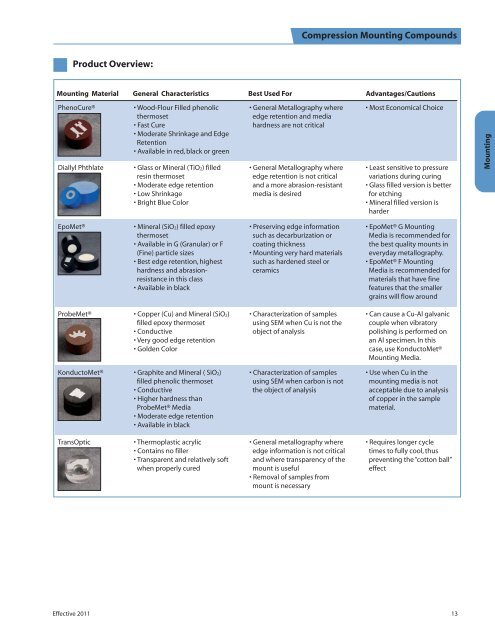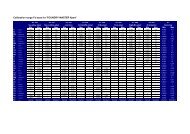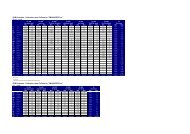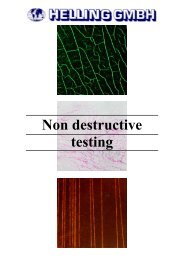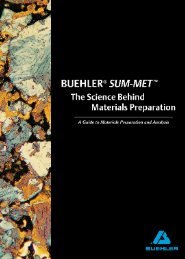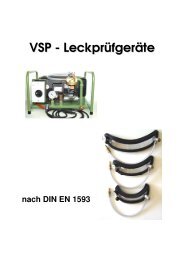Sales policy for domestic USA customers.
Sales policy for domestic USA customers.
Sales policy for domestic USA customers.
Create successful ePaper yourself
Turn your PDF publications into a flip-book with our unique Google optimized e-Paper software.
Compression Mounting Compounds<br />
Product Overview:<br />
Mounting Material General Characteristics Best Used For Advantages/Cautions<br />
PhenoCure®<br />
Diallyl Phthlate<br />
• Wood-Flour Filled phenolic<br />
thermoset<br />
• Fast Cure<br />
• Moderate Shrinkage and Edge<br />
Retention<br />
• Available in red, black or green<br />
• Glass or Mineral (TiO2) filled<br />
resin thermoset<br />
• Moderate edge retention<br />
• Low Shrinkage<br />
• Bright Blue Color<br />
• General Metallography where<br />
edge retention and media<br />
hardness are not critical<br />
• General Metallography where<br />
edge retention is not critical<br />
and a more abrasion-resistant<br />
media is desired<br />
• Most Economical Choice<br />
• Least sensitive to pressure<br />
variations during curing<br />
• Glass filled version is better<br />
<strong>for</strong> etching<br />
• Mineral filled version is<br />
harder<br />
Mounting<br />
EpoMet®<br />
• Mineral (SiO2) filled epoxy<br />
thermoset<br />
• Available in G (Granular) or F<br />
(Fine) particle sizes<br />
• Best edge retention, highest<br />
hardness and abrasionresistance<br />
in this class<br />
• Available in black<br />
• Preserving edge in<strong>for</strong>mation<br />
such as decarburization or<br />
coating thickness<br />
• Mounting very hard materials<br />
such as hardened steel or<br />
ceramics<br />
• EpoMet® G Mounting<br />
Media is recommended <strong>for</strong><br />
the best quality mounts in<br />
everyday metallography.<br />
• EpoMet® F Mounting<br />
Media is recommended <strong>for</strong><br />
materials that have fine<br />
features that the smaller<br />
grains will flow around<br />
ProbeMet®<br />
• Copper (Cu) and Mineral (SiO2)<br />
filled epoxy thermoset<br />
• Conductive<br />
• Very good edge retention<br />
• Golden Color<br />
• Characterization of samples<br />
using SEM when Cu is not the<br />
object of analysis<br />
• Can cause a Cu-Al galvanic<br />
couple when vibratory<br />
polishing is per<strong>for</strong>med on<br />
an Al specimen. In this<br />
case, use KonductoMet®<br />
Mounting Media.<br />
KonductoMet®<br />
• Graphite and Mineral ( SiO2)<br />
filled phenolic thermoset<br />
• Conductive<br />
• Higher hardness than<br />
ProbeMet® Media<br />
• Moderate edge retention<br />
• Available in black<br />
• Characterization of samples<br />
using SEM when carbon is not<br />
the object of analysis<br />
• Use when Cu in the<br />
mounting media is not<br />
acceptable due to analysis<br />
of copper in the sample<br />
material.<br />
TransOptic<br />
• Thermoplastic acrylic<br />
• Contains no filler<br />
• Transparent and relatively soft<br />
when properly cured<br />
• General metallography where<br />
edge in<strong>for</strong>mation is not critical<br />
and where transparency of the<br />
mount is useful<br />
• Removal of samples from<br />
mount is necessary<br />
• Requires longer cycle<br />
times to fully cool, thus<br />
preventing the “cotton ball”<br />
effect<br />
Effective 2011 13


